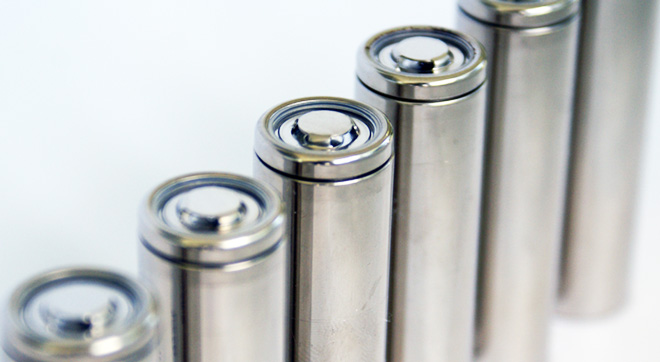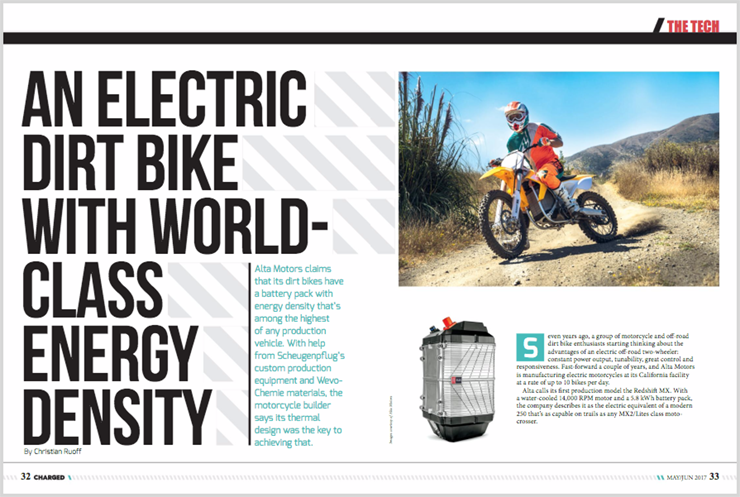This is a milestone review – the first head-to-head comparison of three EVs that “really could be your affordable, every-day, one-and-only car” – and Motor Trend assigned it to a star team of electro-journalists. Reviewers Kim Reynolds, Patrick Hong and Alec Brooks have been working with EVs since the days of the EV1 and the… Read more »
Search Results Found For: "Performance Team "
The new LightningElectric conversion package for the Ford Transit
Loveland, Colorado-based Lightning Systems is accepting pre-orders for its new LightningElectric conversion package for the Ford Transit. Deliveries will begin in early 2018. The product will be available first on heavy-duty Transits with a 10,360-pound gross vehicle weight rating. Conversions and service are performed by Ford QVM-certified upfitters and dealers. Installation can be completed in… Read more »
Former Tesla production head offers insourcing insights
For years, automakers have been steadily outsourcing more and more of their manufacturing. Modern vehicles are assembled from parts made by suppliers all over the world, and in some cases, even the final assembly is done under contract by companies such as Magna and Valmet. Tesla has reversed this trend to a certain extent –… Read more »
Tesla Model 3: Will this machine kill the Oil Age?
It’s hard to overestimate the importance of the Tesla Model 3 (although the media has been doing its best). There’s no question that it’s a momentous motorcar on (at least) three levels. First, Model 3’s success is widely assumed to be an existential issue for the company – if it fails to deliver on its… Read more »
LORD Corporation debuts CoolTherm thermal management materials and services
LORD Corporation introduced CoolTherm, a new brand within the company’s leading portfolio of thermal management solutions and technical services. CoolTherm products deliver customized materials that can help electric and hybrid vehicle manufacturers worldwide manage heat issues and increase power density. “The evolution of LORD Thermal Management Materials to the CoolTherm brand will better define the… Read more »
US Army partners with Brown University to study SEI on silicon anodes
The US Army Research Laboratory (ARL) and Brown University researchers have teamed up to study the solid electrolyte interphase (SEI) layer that forms on the anodes of lithium-ion batteries, with particular emphasis on experimental silicon anodes. The Army is working to replace its alkaline and nickel-metal hydride field batteries with Li-ion batteries. “The Army is… Read more »
Mercedes-Benz to enter Formula E in season six
Mercedes-Benz has announced plans to enter the FIA Formula E Championship for the 2019/20 season. “We’re witnessing a transformation that will first change our cities, and then our roads,” said Formula E CEO Alejandro Agag. “Formula E is the championship that embodies that change, and together with all our teams and manufacturers we’ll keep pushing… Read more »
Peugeot premium brand DS accelerates EV development with help from Formula E
Peugeot has announced that its premium brand, DS Automobiles, will accelerate the development of electrified cars. Starting with the new DS 7 Crossback, it plans to release a new hybrid or electric model every year. “DS is entering the electrified vehicles scene,” said DS Product and Development Director Eric Apode. “By 2025, more than a… Read more »
Alta Motors says its electric dirt bike has world-class energy density
Alta Motors claims that its dirt bikes have a battery pack with energy density that’s among the highest of any production vehicle. With help from Scheugenpflug’s custom production equipment and Wevo-Chemie materials, the motorcycle builder says its thermal design was the key to achieving that. Seven years ago, a group of motorcycle and off-road dirt… Read more »
New study finds V2G discharging harmful to EV batteries
Vehicle-to-grid (V2G) technology is seen as a potentially valuable resource for balancing electrical grids and facilitating the use of renewable energy. However, a new study by a team at the University of Hawaii suggests that the additional cycling to discharge vehicle batteries to the grid is detrimental to battery performance. In “Durability and reliability of… Read more »
















